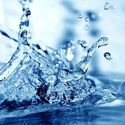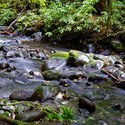Water always runs downhill, from mountains to sea. In the Waikato, individual drops of freshwater begin their journey in the catchment around Lake Taupō and travel through the Waikato River all the way to Port Waikato. The Waikato River receives water from other sources along the way – groundwater, precipitation and tributaries. The Waikato River is a huge source of water for both the Waikato and Auckland regions.
There are a variety of methods used in the Waikato region to collect water to use for drinking. They include pumping water from the Waikato River, smaller streams and aquifers. Roof water is also collected and used in rural areas.
This activity is part of a suite of resources that support Smart Water – a context for learning, which provides students and teachers with opportunities to connect with water and learn more about drinking water in the Waikato region. The science and mātauranga concepts that underpin Smart Water are transferable to other locations in Aotearoa New Zealand.
In this activity, students explore the major freshwater features and sources of water for the Waikato region.
By the end of this activity, students should be able to:
- recognise major water bodies in the region
- identify water sources for Waikato.
Download the Word file (see link below).
Related content
Smart Water – integrated inquiry cycle groups Smart Water resources into key science and teaching concepts that underpin water conservation.
Rivers and Us – a context for learning has pedagogical information and links to numerous resources that explore water use and water quality.
These resources provide useful background information about catchments:
- Water catchments – general information about catchments using the Waikato River catchment as the context.
- Water flows and catchments – a curation of water catchment resources.
- Water in the Waikato region – regional Waikato focus.
Activity ideas
Other activities in Smart Water:
- Getting to know water collects students’ prior knowledge and experiences of freshwater as the starting point to form an inquiry plan.
- Water in nature explores states of matter in the water cycle.
- Te mana o te wai explores the concept of mauri – the health and wellbeing of a waterway.
- Global water perspectives explores water availability and water stress around the world, with comparison and reflection on Aotearoa New Zealand’s situation.
- Getting water ready to drink explores the drinking water treatment process.
- Water use challenge investigates how much water we need for our daily tasks.
- Water issues and effects explores water issues in the Waikato region, their effects and alternative possibilities.
- Being smart with water uses the knowledge gained from the ongoing inquiry to make a difference in how we use water.
Useful links
Visit Smart Water for water level alerts, water saving tips and more.
Use an online map to view water features in the Waikato region:
Use an online map to find out where water travels in your district:
Acknowledgement
This resource has been produced with the support of Smart Water.





